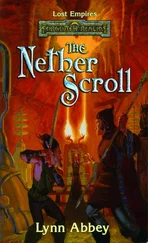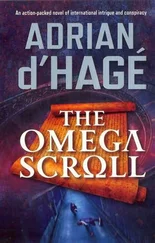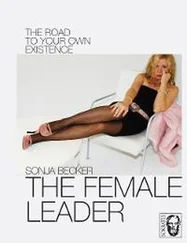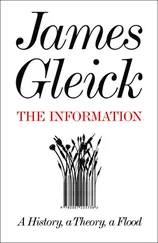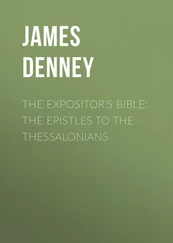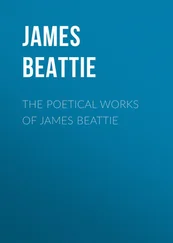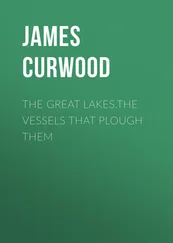James Becker - The Nosferatu Scroll
Здесь есть возможность читать онлайн «James Becker - The Nosferatu Scroll» весь текст электронной книги совершенно бесплатно (целиком полную версию без сокращений). В некоторых случаях можно слушать аудио, скачать через торрент в формате fb2 и присутствует краткое содержание. Жанр: Триллер, на английском языке. Описание произведения, (предисловие) а так же отзывы посетителей доступны на портале библиотеки ЛибКат.
- Название:The Nosferatu Scroll
- Автор:
- Жанр:
- Год:неизвестен
- ISBN:нет данных
- Рейтинг книги:4 / 5. Голосов: 1
-
Избранное:Добавить в избранное
- Отзывы:
-
Ваша оценка:
- 80
- 1
- 2
- 3
- 4
- 5
The Nosferatu Scroll: краткое содержание, описание и аннотация
Предлагаем к чтению аннотацию, описание, краткое содержание или предисловие (зависит от того, что написал сам автор книги «The Nosferatu Scroll»). Если вы не нашли необходимую информацию о книге — напишите в комментариях, мы постараемся отыскать её.
The Nosferatu Scroll — читать онлайн бесплатно полную книгу (весь текст) целиком
Ниже представлен текст книги, разбитый по страницам. Система сохранения места последней прочитанной страницы, позволяет с удобством читать онлайн бесплатно книгу «The Nosferatu Scroll», без необходимости каждый раз заново искать на чём Вы остановились. Поставьте закладку, и сможете в любой момент перейти на страницу, на которой закончили чтение.
Интервал:
Закладка:
‘OK,’ he said, smiling down at her, ‘you’re the historian. So what, exactly, is the Festival of the Dead?’
Angela rested her head against his shoulder. ‘Do you really want a history lesson?’ she asked.
‘I like hearing you talk, especially when you’re talking about something that really interests you. And you know I’m never tired of hearing about Italy.’
‘Actually, it’s not really Italian history,’ Angela began, ‘because the date — the first of November — comes from a really old pagan festival, and is celebrated over most of Western Europe. Yesterday was, of course, the last day of October, or Halloween, which as everyone knows has always been associated with death and the supernatural. But what’s less well known is that it’s only ever been a kind of taster, a precursor, if you will, for the main event — Allhallows or Hallowmas, which is today.’
‘I thought it was a kind of saints’ day,’ Bronson objected.
Angela nodded. ‘If you talk to a Christian, especially an Anglican or Roman Catholic, he or she will tell you that today is All Saints’ Day, a day that celebrates God and all his saints, both known and unknown, so the Church can cover all the bases. But it’s a little more complicated than that, because the early Christian Church was desperate to try to stamp out all competing religions, especially all pagan rituals and celebrations. They couldn’t simply ban pagan festivals because they feared that people would still observe them in secret, so they did the next best thing: they hijacked them.
‘Some time in the early seventh century, Christians began celebrating All Saints’ Day on the first of November. In 835 AD Pope Gregory IV officially authorized the festival, and it’s been celebrated ever since. Allhallows was once one of the four greatest and most important festivals in the pagan calendar, but most Christians today have never heard of it, because the Church has done such a good job of changing the original purpose and meaning of the celebrations.
‘And, just to ram home the fact that November the first was a Christian celebration, the Church also created another festival day on the second of the month — All Souls’ Day, which is a celebration to help cleanse and purify the spirits of the dead. And you’ll find similar crowds out on San Michele tomorrow, because the Venetians celebrate both days.’
‘But surely the early Christians weren’t celebrating death?’
Angela shook her head. ‘No, not death, but the dead themselves. Allhallows was intended to help people remember the dead, and to say prayers for the souls of the departed. Interestingly, it’s not just in Western Europe that you find this kind of celebration. Over in Mexico they have a Day of the Dead, which is also on the second of November, and that’s a kind of combination of an ancient Native American tradition and the Catholic All Souls’ Day. The people there decorate their homes with fake skeletons, visit cemeteries to clean and tidy the graves of their deceased relatives, and even leave offerings of food and drink for various wandering spirits.’
‘And I suppose the Venetian Festival of the Dead is something similar?’ Bronson asked.
‘Exactly, but over here they don’t so much tend the graves as wander about the cemetery carrying lighted candles and chrysanthemums. Those flowers have become firmly associated with burial ceremonies in Italy, and it’s a very bad idea to offer a bunch to anyone who’s still alive. But, being Italy, it’s become a social event, too, especially for locals — and because we’re here in Venice, I thought it would be interesting to come along.’
‘So we’ll be spending the evening in a graveyard. How nice!’ Bronson turned his back on the city they had left and looked ahead at the Isola di San Michele, colloquially known as the ‘Island of the Dead’ because it was simply a huge graveyard.
He’d read that the idea of using one of the islands in the Venetian lagoon as a graveyard dated back to 1807, when Venice was conquered by Napoleon and was suffering under a French occupation that virtually bankrupted the city. Burial on Venice itself was deemed to be unsanitary, so the neighbouring island of San Cristoforo della Pace was selected for the task. When that proved inadequate in size, the narrow canal that separated San Cristoforo della Pace from the larger San Michele was filled in, during 1836, and the combined island became known simply as San Michele. For a very short period the island was also used as a prison, but afterwards reverted to solely being a graveyard, which still held some very famous corpses. The bodies of the dead were transported across to the island from Venice on special funeral gondolas.
The edge of San Michele lay only a couple of hundred yards from Venice itself, but the vaporetto stop was at the most northerly point of the island, right beside the Chiesa di San Michele, one of the earliest Renaissance churches in Venice. Bronson could see it now, its stark white Istrian stone standing out in the gloom, and marking it out from the mellow colours that characterized most Venetian architecture.
A couple of minutes later, the vaporetto was stationary alongside the jetty, and the gangway had been opened. The passengers surged off the vessel and started making their way towards the entrance. Bronson and Angela were in no particular hurry to leave the boat, so they waited in the stern until almost all the other passengers had left. Then they too stepped on to the jetty and followed the rest of the crowd who, noisy and gesticulating, seemed to be getting in the mood for the evening ahead.
‘The wind’s dropped, which is good news, but it’s getting a bit murky,’ Bronson said to Angela, pointing at the blanket of fog that was descending fast. They had seen patches of mist forming over the water after they’d left Venice, but what lay in front of them was more like a real peasouper. Within minutes, visibility was reduced to just a few yards, and they were glad that the path itself was visible, though the family in front of them were still making enough noise that following them was very easy.
Angela shivered again. ‘You’re right — it’s quite spooky now. And this mist is exactly the right atmosphere for an evening in a graveyard.’ She took a map of the island out of her pocket and smoothed it out.
‘Well, as long as we can find our way back to the jetty and the boat I’m not bothered,’ Bronson said. ‘But I certainly wouldn’t fancy spending the night out here. Do you see that kind of yellow glow in the mist over to the left of us? Shall we head towards it?’
Angela looked in that direction as well, and nodded. ‘It’s probably from all the candles people are carrying.’
They were now catching up with the people ahead, who had walked along the semicircular path that curved around in front of the church, and had then turned down another path that seemed to be leading in the opposite direction.
‘Where are they going now?’
Angela looked down at the map. ‘This path takes us over towards the centre of the cemetery, and also towards some of the older areas. One slightly odd thing about this graveyard is that, these days, the bodies are removed after about ten years. They’re buried in the usual way in the ground, with the grave marked by a slab or headstone, but because this graveyard serves the entire population of Venice, space is pretty limited. So once the body has been reduced to bones, it’s exhumed and the skeleton stored in an ossuary, or bone box. Apparently, there’s an exhumation timetable posted near the entrance.’
Most of the more modern graves they were passing displayed photographs of the occupants, and almost all of them had been decorated with fresh flowers, giving the graveyard a strangely colourful appearance despite the gloom.
Читать дальшеИнтервал:
Закладка:
Похожие книги на «The Nosferatu Scroll»
Представляем Вашему вниманию похожие книги на «The Nosferatu Scroll» списком для выбора. Мы отобрали схожую по названию и смыслу литературу в надежде предоставить читателям больше вариантов отыскать новые, интересные, ещё непрочитанные произведения.
Обсуждение, отзывы о книге «The Nosferatu Scroll» и просто собственные мнения читателей. Оставьте ваши комментарии, напишите, что Вы думаете о произведении, его смысле или главных героях. Укажите что конкретно понравилось, а что нет, и почему Вы так считаете.





